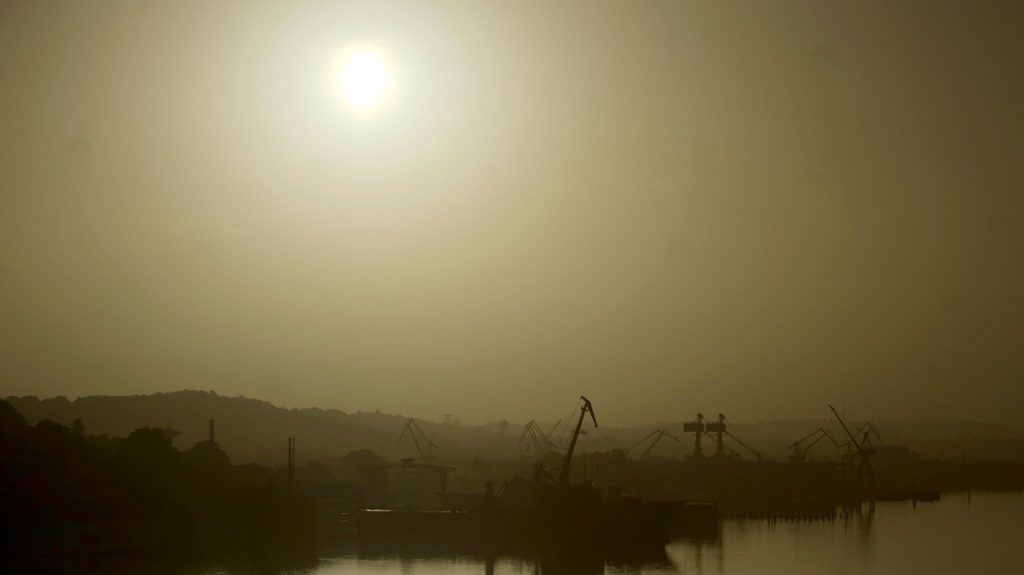Attish Kanhai Research officer, Institute of Marine Affairs
(Trinidad ,Express ) As the tiny boat streaked across the Gulf of Paria during the early hours of a Monday morning, the sky seemed to melt into the ocean. The horizon disappeared as sea and sky faded into one never-ending blue curtain. Not surprising, I thought, as I dreaded the day ahead. The weather forecast had predicted extreme plumes of Saharan dust over the next few days and warned allergy sufferers to take the appropriate measures.
As I entered into the mangrove forest, the waterworks started: runny nose, itchy eyes and sore throat. With a sigh, I accepted my fate for the next few days. Some 3,000 kilometres away, however, the Saharan dust was having an entirely different effect on the Amazon Basin.
Contrary to popular belief, Saharan dust embarks on a more than 10,000-kilometre journey to do more than create runny noses, itchy eyes and sore throats. Saharan dust transported across the Atlantic Ocean to South America and beyond to the Caribbean Sea is the largest transport of dust on the planet. Dust clouds from the Sahara Desert are often so big, they can be seen from space. International Space Station crew members frequently report seeing Saharan dust masses as very widespread atmospheric haze, according to the NASA (National Aeronautics and Space Administration).
The biggest pulses of dust come from February to October when the dust embarks on its Atlantic crossing. The north-easterly Harmattan wind picks up on average 182 million tonnes of dust each year and carries it past the western edge of the Sahara. This volume is the equivalent of 689,290 dump trucks filled with dust. The dust then travels 2,500 kilometres across the Atlantic Ocean, though some drops to the surface or is flushed from the sky by rain. Near the eastern coast of South America, 132 million tonnes remain in the air, and 27.7 million tonnes—enough to fill 104,908 dump trucks —fall to the surface over the Amazon basin.
Provides needed nutrients
It is in the Amazon basin that the Saharan dust serves one of its most important functions. Saharan dust is rich in phosphorus, a crucial nutrient for plant growth. Amazon soils lose as much as 90 per cent of its phosphorus from rainfall as rivers wash it out to sea regularly. Decomposing leaves and plants help recycle some of the phosphorus already in the Amazon, but dust provides a key outside source of the nutrient. Without this continuous source of phosphorus input from the Sahara, the biodiversity of the Amazon can experience adverse effects. However, Saharan dust does not stop there.
About 43 million tonnes of dust travel farther to settle out over the Caribbean Sea, which greatly affects the air that we breathe. The iron that gives Saharan dust its rich red colour feeds the phytoplankton in the Caribbean and along the coast of the south-eastern United States, which is important for oxygen produced by phytoplankton in the world’s oceans. Phytoplankton photosynthesis is responsible for production of half of the world’s oxygen and uptake of half of the carbon dioxide on the planet.
If life-giving oxygen and maintaining the world’s rainforests weren’t enough, hard-working Saharan dust also plays a key role in the suppression of hurricane formation in the Atlantic Ocean. Every three to five days during the summer months of the northern hemisphere, dust storms leave the African coast forming a layer of hot, dusty air known as the Saharan Air Layer, which can influence rainfall levels as far as California. As the dust storms move off northern Africa, it pulls moisture up into the atmosphere.
Storm-fighting
Dust storms have three main components that can suppress a hurricane. One of the main features is very dry air. Dry air in the middle parts of the atmosphere make it difficult for the formation of hurricanes to occur, and this is exactly what the Saharan Air Layer has. Accompanying the Saharan dust storm is also a very strong surge of air embedded within it, known as vertical wind shear, which can also hamper the development of storms.
The third and final component of its storm-fighting powers is, of course, dust. Researchers believe that the dust itself suppresses the formation of clouds, which in turn prevents tropical waves from intensifying.
Considering Sahara dust’s storm-fighting abilities, fertilising power and life-giving oxygen, our visitors from the Sahara are more than simply dust blowing in the wind, but are responsible for a very important moment in the history of the planet’s biodiversity.
—To learn more about Saharan dust, please read: Sara C Nelson—“Sahara Dust: 7 Things You Didn’t Know About This Curious Weather Phenomenon” at HuffPost UK: https://bit.ly/2NtbvPK

